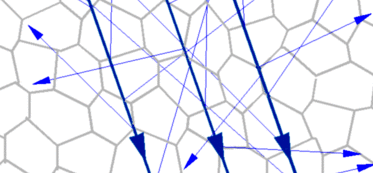Sand and Multiple LIght Scattering

Nanoparticles and other nanoscale materials are often analyzed through the specialized use of light scattering. Several techniques use the light scattered from small particles to estimate their size distribution; these techniques employ light absorption, laser diffraction, and dynamic light scattering. This lab introduces concepts of particle light scattering, using somewhat larger particles that students can easily see. The lab is designed to allow students to explore the interaction of light with small particles of sand immersed in a medium; the latter includes air, water, toluene, and a mystery liquid (acetone is used here; alcohol or some other organic solvent can also be used). This lab introduces related concepts of refractive index and multiple light scattering. From this lab, students will be able to discuss how light refraction and scattering may be used in the detection and characterization of nanoparticles. In this lab, students will work with the light scattering properties of sand when wet versus dry, and the differences when the wetting agent is water versus a hydrocarbon.

